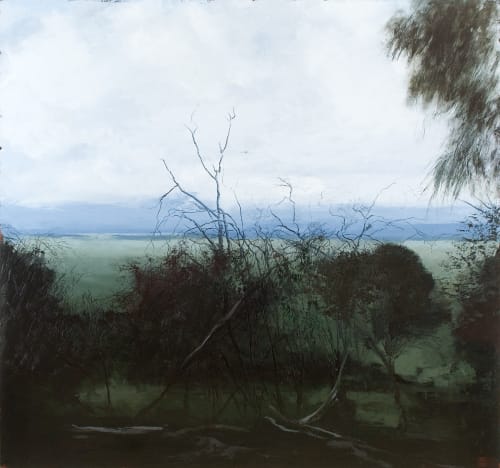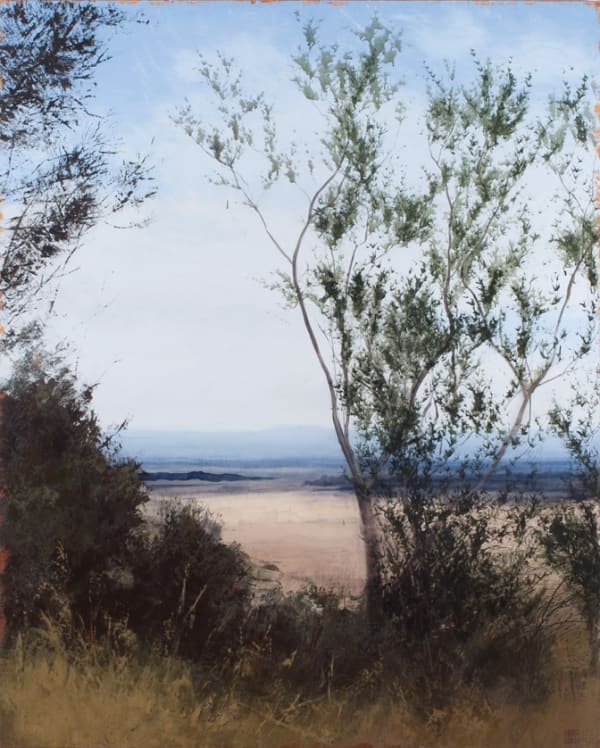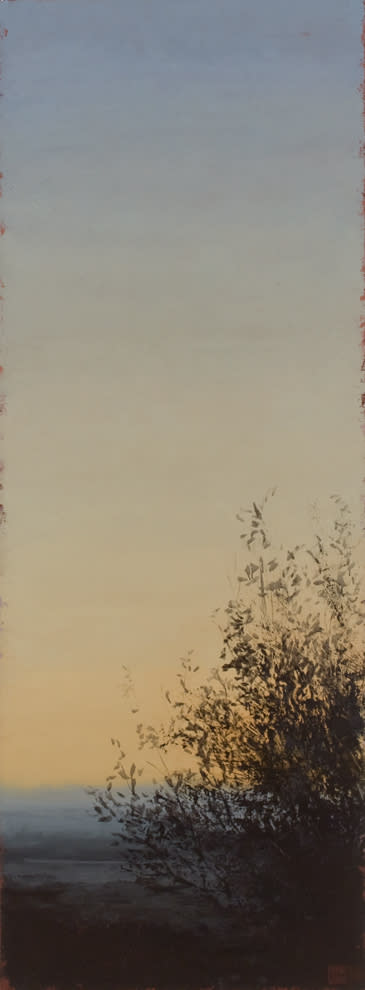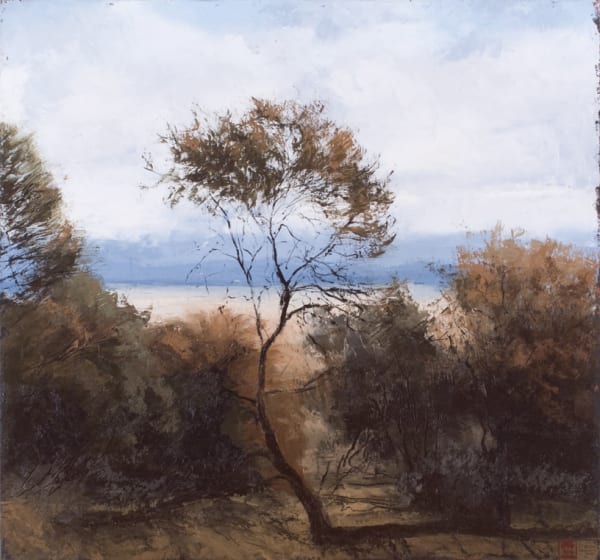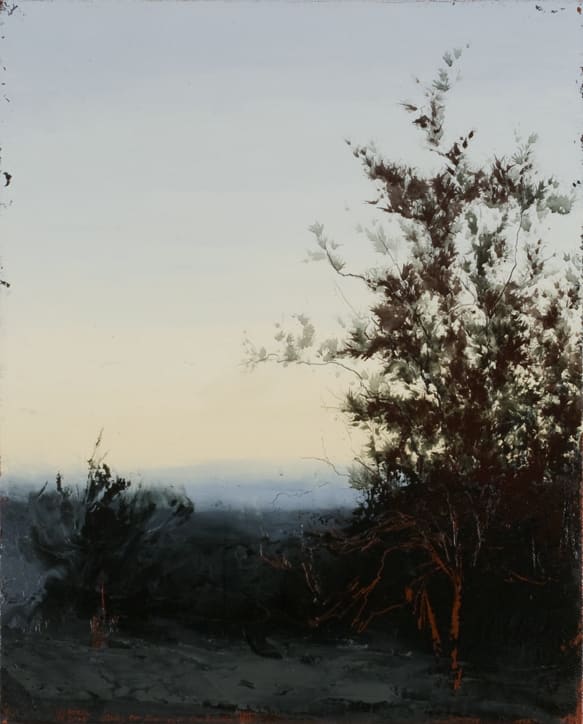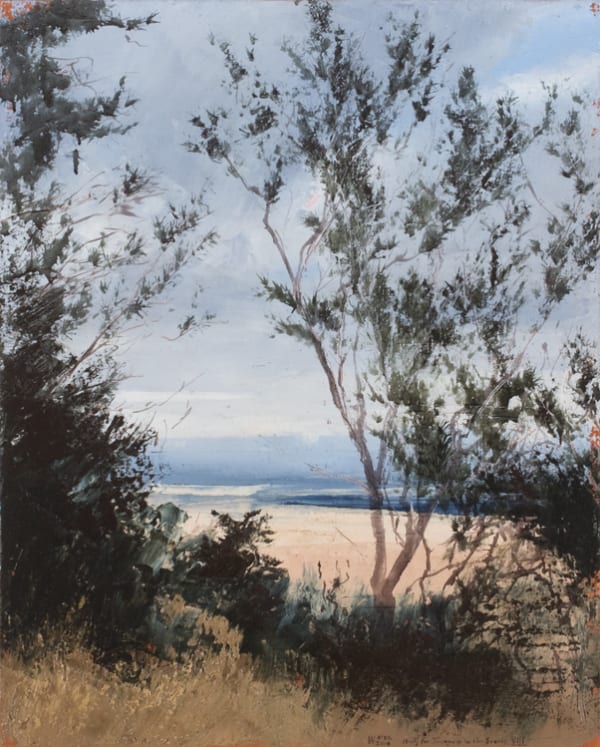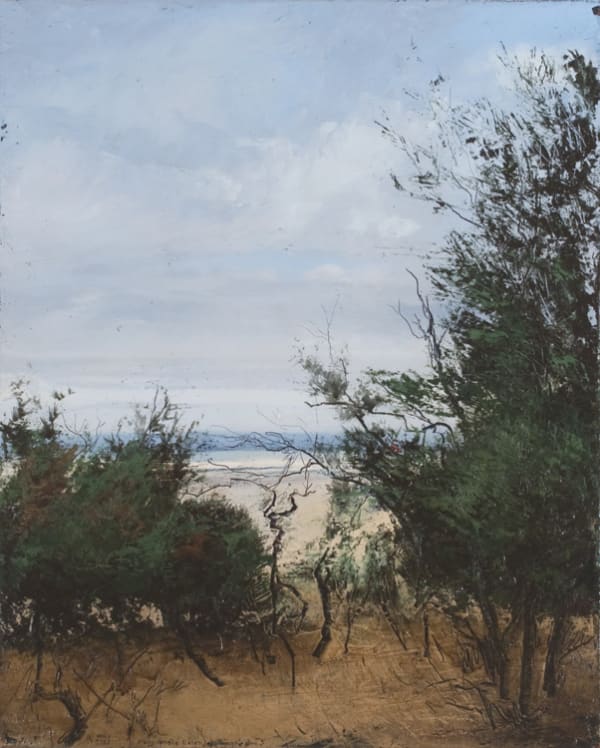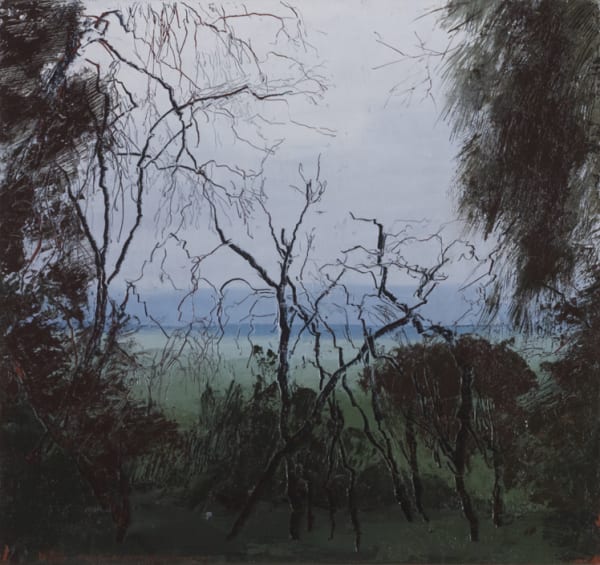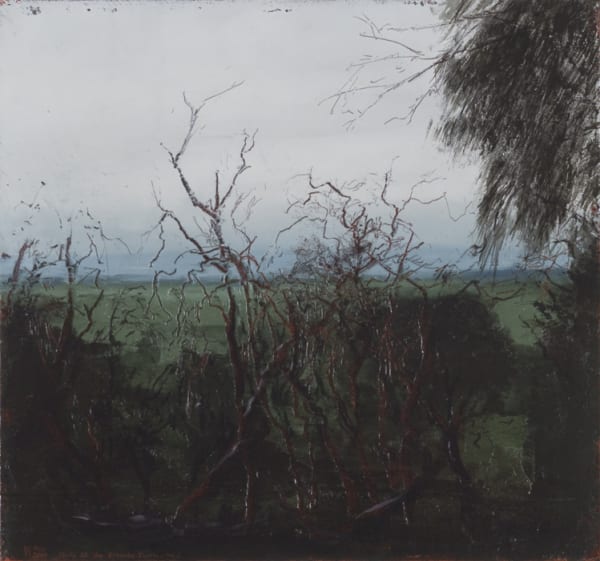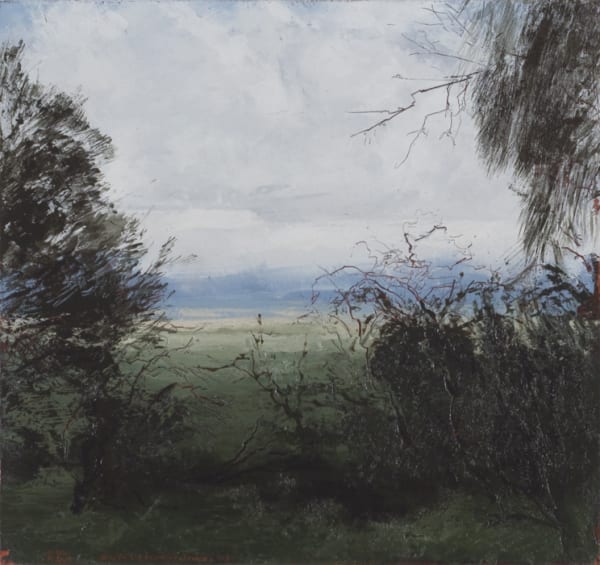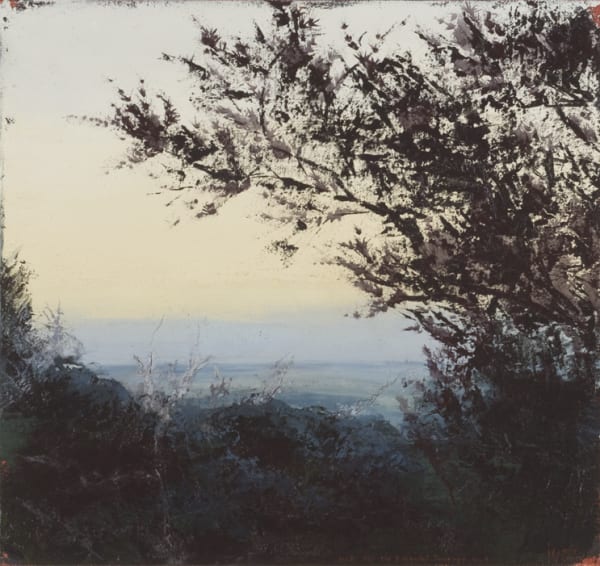The Extended Journey
The introduction of more developed foregrounds in my paintings began in the spring of 2008. The impetus for this was twofold; a desire for more compositional complexity in my paintings, and a renewed clarity of vision following the removal of a cataract in my right eye. The joy of seeing with both eyes again, and the marvel of stereoscopic vision, brought renewed vigour to my paint handling and its textural, three dimensional quality. The first source material I embraced was the garden, particularly the tracery of bare winter branches and it was not difficult for me then to engage with the straggly native - half dead but still beautiful - remnant scrubby bush on the hill overlooking our house. The paintings in this exhibition are all derived from this place. I like the way eclipsing a view with trees has a way of intensifying the view beyond. It is the same when you are driving the car and can only glimpse fleetingly at a cloud formation, it seems more poignant – you stop the car, get out, and find it is just an ordinary, meaningless cloud! It was the obscurity that made it compelling.
For a long time I had wanted to tackle the problems of figuration introduced into the landscape by tree-forms – I had begun to feel constrained by old preoccupations with space and light alone; I needed to introduce new characters to my ‘story’. In the process of this I found I had to go back to the past and really look at those old paintings, particularly Claude Lorrain, the most often cited source of our conventions of landscape composition. It seemed a natural undertaking for me, as much of the painting I love, Constable in particular, celebrated the influence of Claude. John Glover is the obvious segue to the Tasmanian context, and therefore any subsequent representations of this landscape that I make.
So I committed myself to this painterly pilgrimage; this metaphorical ‘journey to the source’, to the wellspring of the landscape painting genre. Or am I just rummaging through the rubbish of the past; scouring the ‘great midden’ of cultural tradition, to see if I can find anything worth re-using?
Setting aside these historical matters, the core impetus for me to paint is the need to order and synthesize the forms I observe in nature into the abstract field of a painting stretcher– it is an extension of my need to practice horticulture. The love of plants; the enjoyment of their visual texture, the pleasure of tonal contrasts, of leaf size and character, of line and form, of horizontal growth opposed to vertical...all these considerations that come before colour. So as I am painting these foreground spaces I am in the same zone I am when planting, I am thinking about the past but trying to link it to the present through my action; through the very practice of the tradition.”
Philip Wolfhagen
-
 Philip WolfhagenJourney to the Source VI, 2010oil & beeswax on linen, unframed200h x 214w cmSold
Philip WolfhagenJourney to the Source VI, 2010oil & beeswax on linen, unframed200h x 214w cmSold -
 Philip WolfhagenJourney to the Source VII, 2010oil & beeswax on linen, unframed200h x 160w cmSold
Philip WolfhagenJourney to the Source VII, 2010oil & beeswax on linen, unframed200h x 160w cmSold -
 Philip WolfhagenJourney to the Source VIII, 2010oil & beeswax on linen, unframed200h x 160w cmSold
Philip WolfhagenJourney to the Source VIII, 2010oil & beeswax on linen, unframed200h x 160w cmSold -
 Philip WolfhagenOrnamental Landscape I, 2010oil & beeswax on linen, unframed214h x 80w cmSold
Philip WolfhagenOrnamental Landscape I, 2010oil & beeswax on linen, unframed214h x 80w cmSold -
 Philip WolfhagenOrnamental Landscape II, 2010oil & beeswax on linen, unframed214h x 80w cmSold
Philip WolfhagenOrnamental Landscape II, 2010oil & beeswax on linen, unframed214h x 80w cmSold -
 Philip WolfhagenPreparation for Journey V, 2010oil & beeswax on linen, unframed120h x 129w cmSold
Philip WolfhagenPreparation for Journey V, 2010oil & beeswax on linen, unframed120h x 129w cmSold -
 Philip WolfhagenPreparation for Journey IX, 2010oil & beeswax on linen, unframed120h x 129w cmSold
Philip WolfhagenPreparation for Journey IX, 2010oil & beeswax on linen, unframed120h x 129w cmSold -
 Philip WolfhagenBlack Wattle, 2009oil & beeswax on linen, unframed96h x 103w cmSold
Philip WolfhagenBlack Wattle, 2009oil & beeswax on linen, unframed96h x 103w cmSold -
 Philip WolfhagenStudy for Journey to the Source III, 2009oil & beeswax on linen, unframed57h x 46w cmSold
Philip WolfhagenStudy for Journey to the Source III, 2009oil & beeswax on linen, unframed57h x 46w cmSold -
 Philip WolfhagenStudy for Journey to the Source VII, 2010oil & beeswax on linen, unframed57h x 46w cmSold
Philip WolfhagenStudy for Journey to the Source VII, 2010oil & beeswax on linen, unframed57h x 46w cmSold -
 Philip WolfhagenStudy for Journey to the Source VIII, 2010oil & beeswax on linen, unframed57h x 46w cmSold
Philip WolfhagenStudy for Journey to the Source VIII, 2010oil & beeswax on linen, unframed57h x 46w cmSold -
 Philip WolfhagenStudy for the Extended Journey No.05, 2010oil & beeswax on linen, unframed57h x 46w cmSold
Philip WolfhagenStudy for the Extended Journey No.05, 2010oil & beeswax on linen, unframed57h x 46w cmSold -
 Philip WolfhagenStudy for the Extended Journey No.01, 2009oil & beeswax on linen, unframed46h x 49w cmSold
Philip WolfhagenStudy for the Extended Journey No.01, 2009oil & beeswax on linen, unframed46h x 49w cmSold -
 Philip WolfhagenStudy for the Extended Journey No.02, 2009oil & beeswax on linen, unframed46h x 49w cmSold
Philip WolfhagenStudy for the Extended Journey No.02, 2009oil & beeswax on linen, unframed46h x 49w cmSold -
 Philip WolfhagenStudy for the Extended Journey No.03, 2009oil & beeswax on linen, unframed46h x 49w cmSold
Philip WolfhagenStudy for the Extended Journey No.03, 2009oil & beeswax on linen, unframed46h x 49w cmSold -
 Philip WolfhagenStudy for the Extended Journey No.04, 2010oil & beeswax on linen, unframed46h x 49w cmSold
Philip WolfhagenStudy for the Extended Journey No.04, 2010oil & beeswax on linen, unframed46h x 49w cmSold
